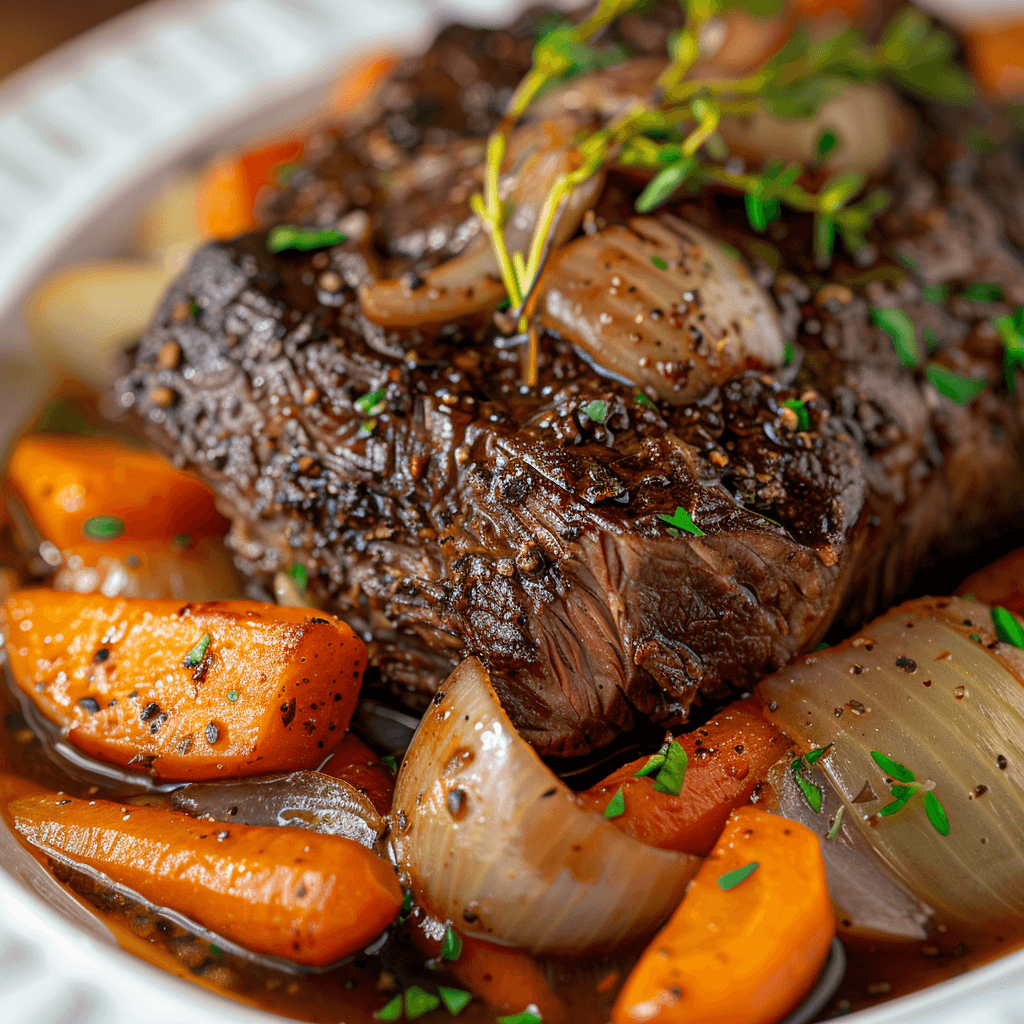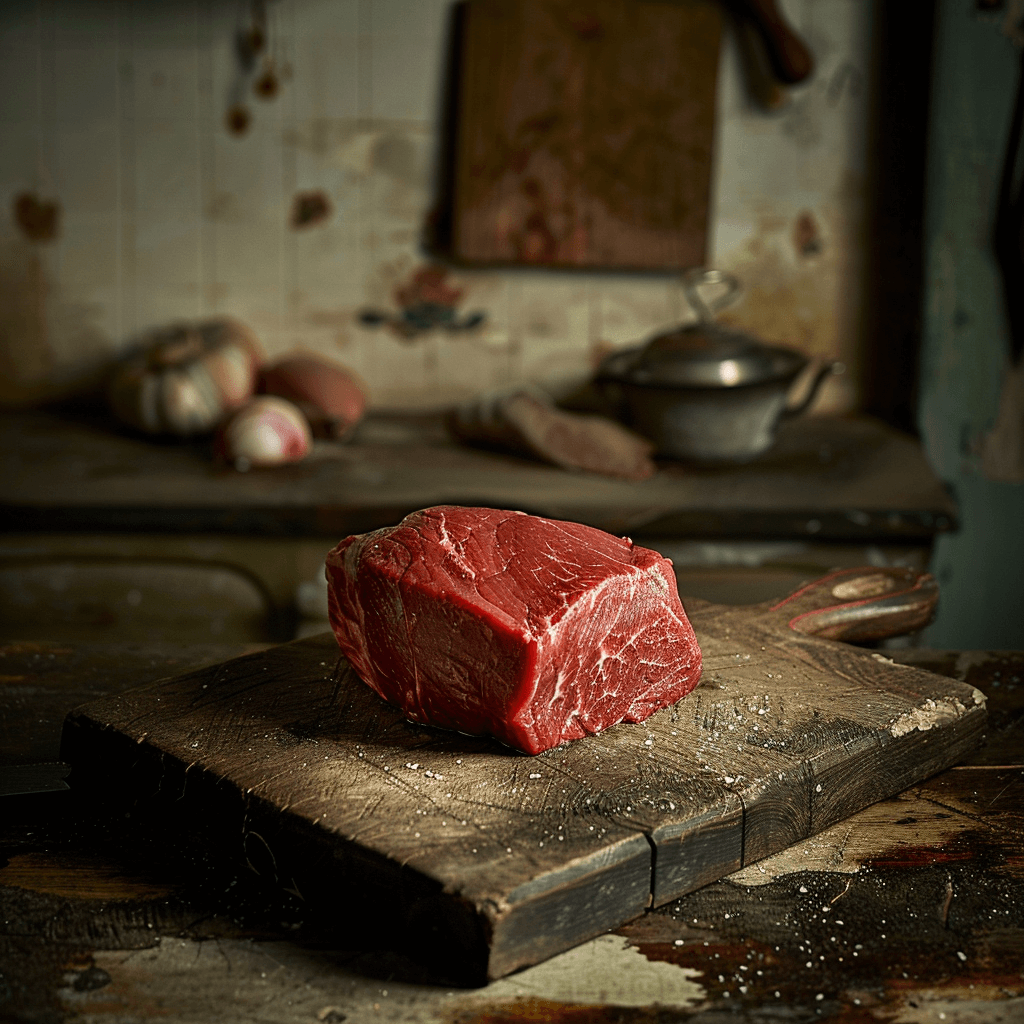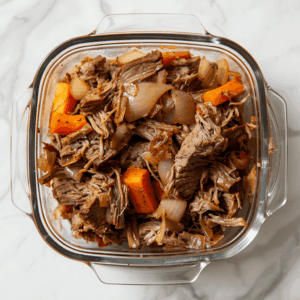Pot roast has long been a symbol of home-cooked comfort. Its tender beef, rich broth, and hearty vegetables bring back memories of family dinners and cozy Sundays. When made with patience and love, it becomes more than just a meal—it turns into a cherished tradition.

Table of Contents
Why Perfect Pot Roast Stands Out
Unlike quicker meals, pot roast thrives on slow, careful cooking. The result is beef that melts in your mouth, paired with carrots and onions that soak up every bit of flavor. It’s a simple yet impressive dish that anyone can master.
The History and Tradition of Pot Roast
Roots in Home Cooking
Pot roast traces back to European immigrants who brought the art of braising tough cuts of meat to tender perfection. This technique quickly became a staple in American households, especially during cold seasons when hearty meals were essential.
Regional Variations
Every region has its twist on pot roast. In the South, it might feature spicy seasoning. In New England, a splash of ale often deepens the flavor. Whether made in a Dutch oven, slow cooker, or pressure cooker, pot roast reflects its maker’s culture and creativity.
Why You’ll Love This Perfect Pot Roast Recipe
Simple Ingredients, Big Flavor
One of the best things about pot roast is its simplicity. You don’t need fancy ingredients—just good beef, fresh vegetables, broth, and a few herbs. Together, they create a meal that’s deeply satisfying and richly flavorful.
Perfect for Meal Prep and Leftovers
Pot roast is ideal for cooking once and eating multiple times. It stores and reheats beautifully, often tasting even better the next day. Leftover roast can be transformed into sandwiches, tacos, or stews, making it a practical and delicious choice for busy weeks.
Ingredients for Perfect Pot Roast

Primary Ingredients
- Chuck roast (4 to 5 pounds)
- Carrots, cut into large chunks
- Onions, halved and peeled
- Beef broth or red wine
- Olive oil
- Salt and black pepper
- Fresh rosemary and thyme sprigs
Optional Add-ins for Extra Flavor
- Button mushrooms
- Garlic cloves
- Celery sticks
- Parsnips
- Bay leaves
Choosing the Right Cut of Beef
Why Chuck Roast Works Best
Chuck roast is richly marbled, making it the perfect cut for slow, moist cooking methods like braising. As it cooks, the marbling breaks down, creating tender and flavorful meat without needing fancy techniques.
Alternative Cuts to Consider
Other good choices include brisket, bottom round, or rump roast. Each offers a slightly different texture but will still yield a hearty and satisfying pot roast when cooked properly.
Essential Equipment Needed
Choosing the Right Dutch Oven
A heavy, enameled Dutch oven is ideal for pot roast. It distributes heat evenly and locks in moisture, helping the beef cook slowly and tenderize beautifully. Look for one that’s oven-safe and large enough to fit your roast with room for vegetables and broth.
Other Helpful Tools
- Sharp chef’s knife for trimming the beef
- Meat thermometer for checking doneness
- Wooden spoon for deglazing the pot
- Large tongs for handling the roast
How to Make Perfect Pot Roast: Step-by-Step

Prepping Your Ingredients
Start by trimming excess fat from the beef. Peel and chop carrots and onions into large pieces to withstand long cooking times. Measure out your broth or wine and prepare your herb bundle.
Proper Searing Techniques
Heat olive oil in your Dutch oven over medium-high heat. Sear the beef on all sides until a deep golden crust forms. This adds layers of rich flavor to the final dish.
Building Flavor Layers
After removing the beef, sauté the onions, garlic, and carrots in the same pot. Deglaze with wine or broth, scraping up the flavorful bits stuck to the bottom—this is key to a delicious sauce.
Slow Cooking to Tender Perfection
Return the beef to the pot, nestle it among the vegetables, and add enough broth to come halfway up the meat. Cover tightly and roast at a low temperature until the beef is fork-tender, about 3 to 4 hours.
Key Tips for a Tender, Juicy Pot Roast
Temperature Tricks
Keep your oven temperature around 275°F to 300°F. Slow heat breaks down the connective tissue without drying out the meat.
Best Liquids for Braising
Use beef broth, red wine, or a combination of both for the braising liquid. They add richness and depth to the pot roast, enhancing the natural flavors of the beef and vegetables.
Common Mistakes to Avoid
Overcooking or Undercooking
Overcooking can cause dryness, while undercooking leaves the beef tough. Check for doneness by using a fork—the meat should pull apart easily.
Choosing the Wrong Pot Size
Too large a pot can cause the braising liquid to evaporate too quickly, drying out the roast. Use a pot that fits the beef and vegetables snugly with minimal extra space.
Serving Suggestions
Best Side Dishes for Pot Roast
- Creamy mashed potatoes
- Southern style green beans
- Crusty artisan bread
- Roasted root vegetables
Wine Pairing Ideas
Pair pot roast with full-bodied red wines such as Cabernet Sauvignon, Merlot, or Syrah to enhance the meal’s hearty flavors.
Storage and Reheating
Best Practices for Storage
Allow the pot roast to cool completely before transferring it to an airtight container. Refrigerate for up to 4 days or freeze for up to 3 months.
How to Reheat Without Losing Moisture
Reheat pot roast slowly in a covered dish with a splash of broth to keep it juicy. Oven reheating at 300°F works best for maintaining tenderness.
Frequently Asked Questions
What cut of beef is best for pot roast?
Chuck roast is ideal because its marbling breaks down during long cooking, keeping the meat tender and flavorful. Brisket or round roast also work, but may be leaner.
How do I know when the pot roast is done?
The roast is done when a fork slides into the meat with little resistance and it reaches an internal temperature of about 195–205°F (90–96°C). At this point, connective tissues have melted, making the meat fork-tender.
How can I thicken the gravy?
Remove the meat and vegetables, then simmer the cooking liquid on the stovetop. Stir in a slurry of 1–2 tbsp cornstarch mixed with cold water and cook until it reaches your desired consistency.
Can I substitute red wine for some of the broth?
Yes. Replace up to half the beef broth with a dry red wine for extra depth of flavor. Just be sure to cook off the alcohol by simmering a few minutes before adding the meat back in.
Can I freeze pot roast and its gravy?
Absolutely. Cool completely, then portion into airtight containers or freezer bags. Freeze for up to 3 months. Thaw overnight in the fridge before reheating gently on the stovetop or in the oven.
What vegetables work best in pot roast?
Sturdier root veggies like carrots, potatoes, parsnips, and celery hold up well. Add more delicate vegetables (e.g. peas) during the last 15 minutes of cooking to prevent over-mushiness.
How should I store and reheat leftovers?
Store cooled leftovers in an airtight container in the fridge for up to 4 days. Reheat gently over low heat on the stovetop, adding a splash of broth if needed to keep the meat moist.

Perfect Pot Roast
Ingredients
- 4-5 pounds chuck roast
- 4 large carrots peeled and cut
- 2 large onions halved
- 3 cups beef broth or 2 cups broth + 1 cup red wine
- 2 tbsp olive oil
- Salt and pepper
- 2 sprigs fresh rosemary
- 2 sprigs fresh thyme
Instructions
- Preheat oven to 275°F.
- Season the roast generously with salt and pepper.
- Heat oil in Dutch oven and sear roast on all sides.
- Remove roast; sauté onions and carrots.
- Deglaze with broth and wine, scraping up brown bits.
- Return roast to pot, add herbs, cover tightly, and roast for 3 to 4 hours until fork-tender.
- Serve hot with your choice of sides.
Notes
- Meat Tip: If you can’t find chuck roast, brisket or bottom round are excellent alternatives, though they may require slightly longer cooking times to achieve the same tenderness.
- Liquid Choices: Red wine adds deep, rich flavor, but you can use beef broth alone if you prefer a lighter taste or need a non-alcoholic option.
- Vegetable Swap: Feel free to add parsnips, turnips, or potatoes for a heartier version. Just cut them into large chunks so they don’t overcook.
- Flavor Boost: Searing the beef thoroughly is essential. Don’t rush this step—it builds layers of flavor that transform the dish.
- Leftovers Hack: Shred leftover pot roast and use it for sandwiches, tacos, or a savory beef stew. It tastes even better the next day!
- Storage Advice: Always cool the roast completely before refrigerating or freezing to maintain its texture and flavor.